Ditapis dengan
E-book Yuarn Music Dramas : Studies in Prosody and Structure and a Complete C…
The term shie-tzyy was appropriated from the Chinese car-penter, to whom it denoted a small wedge-shaped cut of wood usedto fill a crack or cleavage in an article of furniture. With similarprecision, the Yuarn dramatist could always turn to the demi-actfor a flexible alternative to the simple four-act format of the stan-dard music drama.…
- Edisi
- -
- ISBN/ISSN
- 9780472901470
- Deskripsi Fisik
- 399 hlm
- Judul Seri
- -
- No. Panggil
- 902 JOH y
E-book Cultural and Civilisational Links between India and Southeast Asia
The books presents the study undertaken by the ASEAN-India Centre (AIC) at Research and Information System for Developing Countries (RIS) on India’s cultural links with Southeast Asia, with particular reference to historical and contemporary dimensions. The book traces ancient trade and maritime links, Chola Empire and Southeast Asia, religious exchanges (the Hindu, Buddhist and Islamic he…
- Edisi
- -
- ISBN/ISSN
- 9789811073168
- Deskripsi Fisik
- 375 halaman, ilus.
- Judul Seri
- -
- No. Panggil
- 959 SAR c
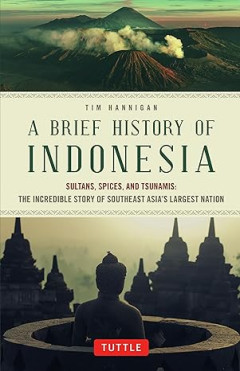
E-book A Brief History of Indonesia: Sultans, Spices, and Tsunamis: The Incre…
Indonesia is by far the largest nation in Southeast Asia and has the fourth largest population in the world after the United States. Indonesian history and culture are especially relevant today as the Island nation is an emerging power in the region with a dynamic new leader. It is a land of incredible diversity and unending paradoxes that has a long and rich history stretching back a thousand …
- Edisi
- -
- ISBN/ISSN
- 9780804844765
- Deskripsi Fisik
- 251 halaman, ilus.
- Judul Seri
- -
- No. Panggil
- 959.8 HAN a
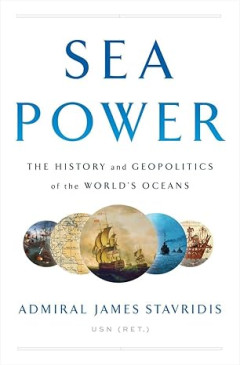
E-book Sea Power: The History and Geopolitics of the World's Oceans
From one of the most admired admirals of his generation—and the only admiral to serve as Supreme Allied Commander at NATO—comes a remarkable voyage through all of the world’s most important bodies of water, providing the story of naval power as a driver of human history and a crucial element in our current geopolitical path. From the time of the Greeks and the Persians clashing in th…
- Edisi
- -
- ISBN/ISSN
- 9780735220591
- Deskripsi Fisik
- 295 halaman, ilus.
- Judul Seri
- -
- No. Panggil
- 359 STA s
E-book The Spanish Connection : French and Flemish Merchant Networks in Sevil…
During the time of Spanish splendor, at the peak of the Spanish Indies trade,the position of the rich merchants in Seville was remarkably strong. ?ey resid-ed at the hub between the European and the American economy and the com-mercial opportunities seemed endless. Based on recent literature and abundantsource material, this chapter gives a survey of the economic and social struc-ture of the ci…
- Edisi
- -
- ISBN/ISSN
- 9783412225360
- Deskripsi Fisik
- 458 hlm
- Judul Seri
- -
- No. Panggil
- 946 CRA t
E-book Martin Waldseemüller’s 'Carta marina' of 1516 : Study and Transcrip…
This book is devoted to an imposing world map, printed on twelve sheets and rich in detail, that was designed by the Germancartographer Martin Waldseemüller in 1516, whose only surviving exemplar is in the Jay I. Kislak Collection at the Libraryof Congress. This map, theCarta marina, has tended to live in the shadow of Waldseemüller’s earlier world map, thatprinted in 1507, which is famous …
- Edisi
- -
- ISBN/ISSN
- 9783030227036
- Deskripsi Fisik
- 155 hlm
- Judul Seri
- -
- No. Panggil
- 940 VAN m
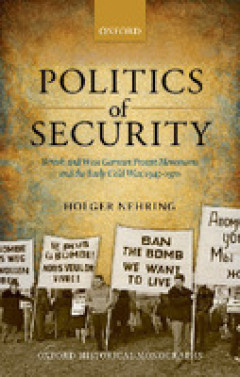
E-book Politics of Security: British and West German Protest Movements and th…
The Politics of Security tells the story of how people experienced the cold war as a war. It is about the impact of the cold war on political cultures. This crucial issue is often forgotten in historical memory. In particular, the book follows British and West German anti-nuclear-weapons activists in their attempts to campaign for and create security after the destruction of the Second World Wa…
- Edisi
- -
- ISBN/ISSN
- 9780199681228
- Deskripsi Fisik
- 342 halaman
- Judul Seri
- -
- No. Panggil
- 940.54 NEH p
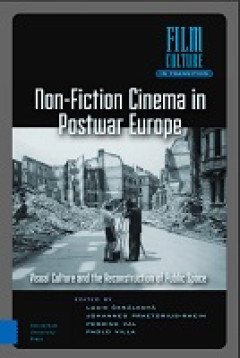
E-book Non-Fiction Cinema in Postwar Europe: Visual Culture and the Reconstru…
After WWII, cinema was everywhere: in movie theatres, public squares, factories, schools, trial courts, trains, museums, and political meetings. Seen today, documentaries and newsreels, as well as the amateur production, show the kaleidoscopic portrait of a changing Europe. How did these cinematic images contribute to shaping the new societies emerging from the ashes of war, both in the Western…
- Edisi
- -
- ISBN/ISSN
- 9789048556625
- Deskripsi Fisik
- 520 halaman
- Judul Seri
- -
- No. Panggil
- 778.534 CES n
E-book Northeastern Asia and the Northern Rockies : Treasures from the Los An…
his exhibition, Northeastern Asia and the Northern Rockies, has been conceived as an introduction in four parts that will help visitors to the museum and scholars of the university understand key elements of both traditional and current Northeastern Asian native and migrant cultures. The first three parts of the exhibition introduce fundamen-tal concepts inherent in Daoism, Confucian…
- Edisi
- -
- ISBN/ISSN
- 9781685711177
- Deskripsi Fisik
- 325 hlm
- Judul Seri
- -
- No. Panggil
- 902 LIT n
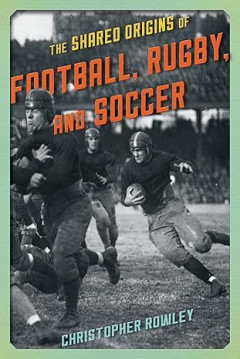
E-book The Shared Origins of Football, Rugby, and Soccer
In today’s hypercompetitive world, contact sports bring about fierce rivalries between fans, between players, and even between countries. From the Ohio State Buckeyes and the Michigan Wolverines in grid iron football, to the Australian Wallabies and the New Zealand All Blacks in rugby, to Real Madrid and Barcelona in association football (soccer), contact sports incite a passion few other gam…
- Edisi
- -
- ISBN/ISSN
- 9781442246188
- Deskripsi Fisik
- 262 halaman, ilus.
- Judul Seri
- -
- No. Panggil
- 796.309 ROW t

E-book Rethinking the Andes–Amazonia Divide : A cross-disciplinary exploration
Maps in this book were reproduced by Paul Heggarty from maps provided by chapter authors, by converting them into a GIS (Geographic Information System) database, collated and enriched for South America for the purposes of this book. All data used on the maps are thus geo- referenced – set to actual latitude and longitude coordi-nates – as precisely as possible. Individual p…
- Edisi
- -
- ISBN/ISSN
- 9781787357358
- Deskripsi Fisik
- 421 hlm
- Judul Seri
- -
- No. Panggil
- 980 PEA r
E-book Talking Dialogue : Eleven Episodes in the History of the Modern Interr…
The last two decades have seenadynamic increase in the number of activitiesthat are explicitlylinked to the notion of interreligious dialogue (IRD). All overthe world, empirical research projects underlinethe establishment of highlycomplex local scenes of these types of initiatives.¹Especiallyatthe nationallevel, it is possibleto identifyasignificant increase in dialogue organizations–either…
- Edisi
- -
- ISBN/ISSN
- 9783110529173
- Deskripsi Fisik
- 389 hlm
- Judul Seri
- -
- No. Panggil
- 939.4 BAR t
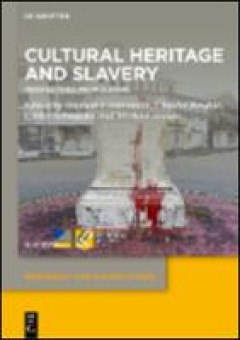
E-book Cultural Heritage and Slavery: Perspectives from Europe
In the recent cultural heritage boom, community-based and national identity projects are intertwined with interest in cultural tourism and sites of the memory of enslavement. Questions of historical guilt and present responsibility have become a source of social conflict, particularly in multicultural societies with an enslaving past. This became apparent in the context of the Black Lives Matte…
- Edisi
- -
- ISBN/ISSN
- 9783111331492
- Deskripsi Fisik
- 352 halaman
- Judul Seri
- -
- No. Panggil
- 930.1 CON c
E-book Mnemonic Solidarity : Global Interventions
This volume introduces a new publication series and a new emphasis in memory studies. The title of the series is Entangled Memories in the Global South. The term “mnemonic solidarity” which gives this book its title signals one response to the observation that historical memories have become entangled. It proposes that that entanglement invites us to rethink memory stu…
- Edisi
- -
- ISBN/ISSN
- 9783030576691
- Deskripsi Fisik
- 144 hlm
- Judul Seri
- -
- No. Panggil
- 902 ERA m
E-book Warlords of Ancient Mexico: How the Mayans and Aztecs Ruled for More T…
Learn the unbelievable true history of the great warrior tribes of Mexico. More than thirteen centuries of incredible spellbinding history are detailed in this intriguing study of the rulers and warriors of Mexico. Dozens of these charismatic leaders of nations and armies are brought to life by the deep research and entertaining storytelling of Peter Tsouras. Tsouras introduces the reader…
- Edisi
- -
- ISBN/ISSN
- 9781629144597
- Deskripsi Fisik
- 405 halaman, ilus.
- Judul Seri
- -
- No. Panggil
- 972 TSO w
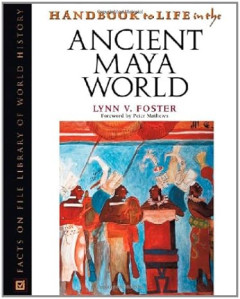
E-book Handbook to Life in the Ancient Maya World
Presents the latest archaeological and historical research on all aspects of Maya society, from its earliest beginnings to the Spanish Conquest in the 16th century.
- Edisi
- -
- ISBN/ISSN
- 9780816041480
- Deskripsi Fisik
- 416 halaman
- Judul Seri
- -
- No. Panggil
- 970.3 FOS h
E-book The Malay Archipelago
A century and a half after it was first published, this book remains one of the great classics of natural history and travel—perhaps the greatest. Alfred Russel Wallace (1823-1913) deserves equal billing with Charles Darwin for his independently drawn but parallel conclusions on the theory of evolution. Darwin himself called Wallace "generous and noble" and referred favorably to his work in l…
- Edisi
- -
- ISBN/ISSN
- 9780794605636
- Deskripsi Fisik
- 600 halaman, ilus.
- Judul Seri
- -
- No. Panggil
- 959 WAL t
E-book The Medieval Economy of Salvation : Charity, Commerce, and the Rise of…
It was a cold winter evening in 2010, and I had just arrived in Paris for a short research trip. The tiny hotel where I would be staying was on the fifth floor of the ophthalmological wing of the hôtel-Dieu (or hospital) just across from the cathedral of Notre Dame. 1 Given the subject of the book I was in France to research, it seemed appropri-ate that I should s…
- Edisi
- -
- ISBN/ISSN
- 9781501742118
- Deskripsi Fisik
- 336 hlm
- Judul Seri
- -
- No. Panggil
- 909.5 DAV t

E-book History of Yugoslavia
Why did Yugoslavia fall apart? Was its violent demise inevitable? Did its population simply fall victim to the lure of nationalism? How did this multinational state survive for so long, and where do we situate the short life of Yugoslavia in the long history of Europe in the twentieth century? The Complete History of Yugoslavia by Marie-Janine Calic provides a concise, accessible, comprehensive…
- Edisi
- -
- ISBN/ISSN
- 9781557538499
- Deskripsi Fisik
- 443 halaman
- Judul Seri
- -
- No. Panggil
- 949.7 CAL h
E-book Borderblur Poetics : Intermedia and Avant-Gardism in Canada, 1963-1988
“This is the death of the poem as I have faithfully reported it, November 29, 1966, as I have faithfully reported it, this is the death of the poem” in-tones Canadian poet bpNichol one day after the Dominion Day celebrations marking Canada’s centennial year. Addressing a national television audi-ence, Nichol reads these lines with poets bill bissett an…
- Edisi
- -
- ISBN/ISSN
- 9781773854588
- Deskripsi Fisik
- 299 hlm
- Judul Seri
- -
- No. Panggil
- 909.82 SCH b
E-book Migrant Ecologies : Environmental Histories of the Pacific World
The creation of—or even the existence of—a “Pacific World” is a question that has preoccupied scholars to a much greater degree than existential doubts have bothered historians of other oceanic basins. Economic historian Eric Jones and colleagues have written that “there can be no meaningful history ofthe whole Rim or Basin [ofthe Pacific] since there…
- Edisi
- -
- ISBN/ISSN
- 9780824892258
- Deskripsi Fisik
- 321 hlm
- Judul Seri
- -
- No. Panggil
- 990 BEA m
E-book Framing the Islands : Power and Diplomatic Agency in Pacific Regionalism
This book tells the story of power and diplomatic agency in Pacific regionalism against the backdrop of a changing global order and a changing political situation within Pacific societies and states. Its purpose is to explore the political significance of this region-building activity for Pacific societies and its political meaning withi…
- Edisi
- -
- ISBN/ISSN
- 9781760463151
- Deskripsi Fisik
- 418 hlm
- Judul Seri
- -
- No. Panggil
- 990 FRY f
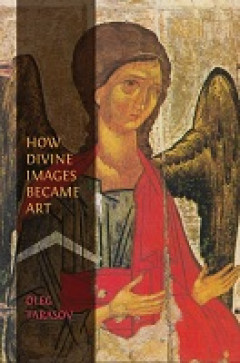
E-book How Divine Images Became Art: Essays on the Rediscovery, Study and Col…
How Divine Images Became Art tells the story of the parallel ‘discovery’ of Russian medieval art and of the Italian ‘primitives’ at the beginning of the twentieth century. While these two developments are well-known, they are usually studied in isolation. Tarasov’s study has the great merit of showing the connection between the art world in Russia and the West, and its impact in the c…
- Edisi
- -
- ISBN/ISSN
- 9781805111580
- Deskripsi Fisik
- 230 halaman
- Judul Seri
- -
- No. Panggil
- 930.1 ROC h
E-book Vietnam Task : The 5th Battalion, The Royal Australian Regiment, 1966�…
Every man sees a war in which he fights from two points of view. The one is his own, his view of his personal life in relation to the harsh environment of battle; the other is the outlook of his unit which makes him share closely the corporate experience of this unit and gives that unit an individual entity and character with its own peculiar difficulties and joys, its…
- Edisi
- -
- ISBN/ISSN
- 9781760465384
- Deskripsi Fisik
- 313 hlm
- Judul Seri
- -
- No. Panggil
- 994 ONE v
E-book The Corporation as a Protagonist in Global History, c. 1550-1750
For almost two decades, historians and academics from a wide- range of sub- disciplinary backgrounds have been situating their research within a global context, crossing boundaries both geographically and methodologically, in such large numbers as to necessitate the emergence of a recognisably new field of enquiry: Global History. From comparative to connective histories, the …
- Edisi
- -
- ISBN/ISSN
- 9789004387850
- Deskripsi Fisik
- 343 hlm
- Judul Seri
- -
- No. Panggil
- 909.5 PET t
E-book Religion and Governance in England’s Emerging Colonial Empire, 1601�…
On 15 September 1622, the poet, onetime MP, lawyer and cleric JohnDonne delivered a sermon in the grounds of the old cathedral at St Paul’sCross, in which he argued the importance of religion to the govern-mental success of the Virginia Company (VC). Donne demonstrated,in his inimitable style, that structured religious governance would leadto the company successfully establishing control over…
- Edisi
- -
- ISBN/ISSN
- 9783030701314
- Deskripsi Fisik
- 297 hlm
- Judul Seri
- -
- No. Panggil
- 940 SMI r
E-boo Like Fire : The Paliau Movement and Millenarianism in Melanesia
In early 2012, when I visited Theodore (Ted) Schwartz at his home in Del Mar, California, he had recently finished digitising audio recordings of interviews he had conducted with Manus people in Papua New Guinea (PNG) from 1953 through 1995; the annotated catalogue went on for many pages.1 Ted gave me an audio tour and we listened to Paliau, his supporters, an…
- Edisi
- -
- ISBN/ISSN
- 9781760464257
- Deskripsi Fisik
- 561 hlm
- Judul Seri
- -
- No. Panggil
- 994 FRE l
E-book Centaurs, Rioting in Thessaly: Memory and the Classical World
Much of the thought and the practice of human life is irredeem-ably related to Ionia, to Achaea, to classical Greek civilisation. Certainly one, if not the only one, of the central imaginings of ourselves and our world is Ionian. Our mapping of ourselves in our world also owes a huge debt to the classical. The emergence, materialisation, and extra-territorialisation of Ionian spaces of philosop…
- Edisi
- -
- ISBN/ISSN
- 9781947447417
- Deskripsi Fisik
- 119 hlm
- Judul Seri
- -
- No. Panggil
- 938 HUD c
E-book The Medical Book: From Witch Doctors to Robot Surgeons, 250 Milestones…
Following his hugely successful The Math Book and The Physics Book, Clifford Pickover now chronicles the advancement of medicine in 250 entertaining, illustrated landmark events. Touching on such diverse subspecialties as genetics, pharmacology, neurology, sexology, and immunology, Pickover intersperses “obvious” historical milestones--the Hippocratic Oath, general anesthesia, the Human Gen…
- Edisi
- -
- ISBN/ISSN
- 9781402792335
- Deskripsi Fisik
- 567 halaman
- Judul Seri
- -
- No. Panggil
- 610.9 PIC t
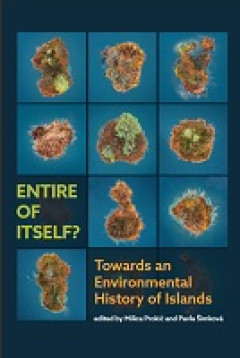
E-book Entire of Itself?: Towards an Environmental History of Islands
The study of islands is booming. Small wonder: islands have played a key role in the history of continents, have been crucial locales of state-making, have served dictatorships as sites of prison systems and have acted as frontiers and stepping stones of empires. However, the role that island environments have played in creating and shaping these histories has so far received little attention. …
- Edisi
- -
- ISBN/ISSN
- 9781912186839
- Deskripsi Fisik
- 370 halaman, ilus.
- Judul Seri
- -
- No. Panggil
- 361.9 PRO e
E-book History from Loss : A Global Introduction to Histories written from de…
Imagine a world in which there is only one history to watch, read, or listen to. If you find this idea difficult, then you have understood something important about history: that there is never just one version of it on offer. Some people might not like this idea, and try to refute it, but no matter how much they argue, or even work to destroy histories, they will be unsuccessful. We live with …
- Edisi
- -
- ISBN/ISSN
- 9781003127499
- Deskripsi Fisik
- 271 hlm
- Judul Seri
- -
- No. Panggil
- 900 ADO h

E-book Bats and Viruses: A New Frontier of Emerging Infectious Diseases
Approximately 75% of emerging infectious diseases are zoonoses, and the rate of emergence of zoonotic diseases is on the rise. Bats are being increasingly recognised as an important reservoir of zoonotic viruses of different families, including SARS coronavirus, Nipah virus, Hendra virus and Ebola virus. Understanding bats’ role in emerging zoonotic diseases is crucial to this rapidly expandi…
- Edisi
- -
- ISBN/ISSN
- 9781118818732
- Deskripsi Fisik
- 405 halaman, ilus.
- Judul Seri
- -
- No. Panggil
- 614.34 WAN b

E-book Ebola: The Natural and Human History of a Deadly Virus
In 1976 a deadly virus emerged from the Congo forest. As swiftly as it came, it disappeared, leaving no trace. Over the four decades since, Ebola has emerged sporadically, each time to devastating effect. It can kill up to 90 percent of its victims. In between these outbreaks, it is untraceable, hiding deep in the jungle. The search is on to find Ebola's elusive host animal. And until we find i…
- Edisi
- -
- ISBN/ISSN
- -
- Deskripsi Fisik
- 108 halaman
- Judul Seri
- -
- No. Panggil
- 614.49 QUA e
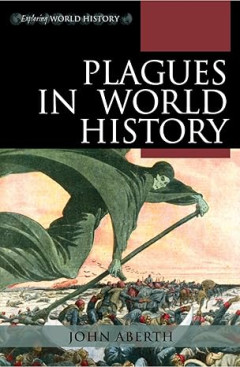
E-book Plagues in World History
Plagues in World History provides a concise, comparative world history of catastrophic infectious diseases, including plague, smallpox, tuberculosis, cholera, influenza, and AIDS. Geographically, these diseases have spread across the entire globe; temporally, they stretch from the sixth century to the present. John Aberth considers not only the varied impact that disease has had upon human hist…
- Edisi
- -
- ISBN/ISSN
- 9780742557055
- Deskripsi Fisik
- 257 halaman
- Judul Seri
- -
- No. Panggil
- 614.49 ABE p
E-book Family and Business during the Industrial Revolution
A visit to a town in the north-west of England 200 years ago would have been anassault on the senses. Though some parts of Liverpool, in particular, experiencedwidespread‘improving’measures from the mid-eighteenth century onwards, in themajority of other places (and indeed throughout significant parts of Liverpool too)it was not until the extensive street-widening schemes of the nineteenth …
- Edisi
- -
- ISBN/ISSN
- 9780198786023
- Deskripsi Fisik
- 279 hlm
- Judul Seri
- -
- No. Panggil
- 909.5 BAR f
E-book At Home in Renaissance Bruges : Connecting Objects, People and Domesti…
Early fifteenth-century travellers such as Spanish writer Pero Tafur praised the city of Bruges because of its liveliness and economic activity: ‘Bruges was a large and wealthy city, and one of the greatest markets of the world [...] anyone who has mon-ey, and wished to spend it, will find in this town alone everything which the world produces’.1 Bruges had played an important…
- Edisi
- -
- ISBN/ISSN
- 9789461664389
- Deskripsi Fisik
- 321 hlm
- Judul Seri
- -
- No. Panggil
- 940 DEG a
E-book Restaging the Past : Historical Pageants, Culture and Society in Moder…
This book examines one of the most significant aspects of popular engagement with the past in twentieth-century Britain. Historical pag-eants began as an Edwardian craze, but persisted as important events in communities and organisations across Britain for much of the next hundred years. Although popular interest in pageantry has undoubtedly declined, re…
- Edisi
- -
- ISBN/ISSN
- 9781787354050
- Deskripsi Fisik
- 346 hlm
- Judul Seri
- -
- No. Panggil
- 940 BAR r
E-book Medicine in Ancient Assur : A Microhistorical Study of the Neo-Assyria…
This monograph approaches ancient medicine through the study of a single individual who practiced magico-medical healing in ancient Mesopotamia. The healer’s name was Ki?ir-Aššur and he was the grandson of B?ba-šuma-ibni, the patronymic ancestor of a family of exorcists. We know nothing about Ki?ir-Aššur’s birth and death, except that he lived arou…
- Edisi
- -
- ISBN/ISSN
- 9789004436084
- Deskripsi Fisik
- 433 hlm
- Judul Seri
- -
- No. Panggil
- 902 ARB m
E-book Congo Style : From Belgian Art Nouveau to African Independence
This is a book about how the Congo was and continues to be imagined in Kinshasa. I outline the way that coproduced visions of nation, modernity, and stereotypes of culture have taken material form in the postcolonial city. My aim is to trace what remains of past presentations of the Congo in the rich textures of key architectural and artistic sites in Kinsh…
- Edisi
- -
- ISBN/ISSN
- 9780472903887
- Deskripsi Fisik
- 249 hlm
- Judul Seri
- -
- No. Panggil
- 960 SAC c
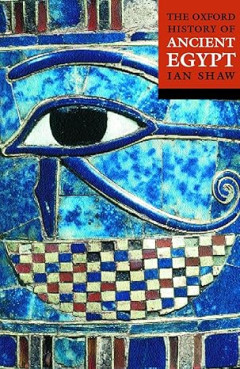
E-book The Oxford History of Ancient Egypt
The Oxford History of Ancient Egypt uniquely covers 700,000 years of ancient Egypt, from c. 700,000 BC to AD 311. Following the story from the Egyptians' prehistoric origins to their conquest by the Persians, Greeks, and Romans, this book resurrects a fascinating society replete with remarkable historical information. It investigates such subjects as the changing nature of life and death in the…
- Edisi
- -
- ISBN/ISSN
- 9780192804587
- Deskripsi Fisik
- 550 halaman, ilus.
- Judul Seri
- -
- No. Panggil
- 932 SHA t
E-book Animals and the Shaping of Modern Medicine : One Health and its Histories
This volume breaks new ground in applying Benson’s second per-spective to medical history: ‘to explore the history of nonhuman ani-mals as subjects in their own right and for their own sakes’.5 Humans remain important, of course, for ultimately we can only know about animals from the records that humans have created, and which reflect …
- Edisi
- -
- ISBN/ISSN
- 9783319643373
- Deskripsi Fisik
- 290 hlm
- Judul Seri
- -
- No. Panggil
- 902 WOO a
E-book Sick Note : A History of the British Welfare State
Darren Anderton played 30 times for the England men’s national football team and made 299 Premier League appearances for Tottenham Hotspur. To fans of a certain age, he is known by another name: ‘Sicknote’. ‘I had a migraine and was throwing up before a Portsmouth game’, recounted Anderton in 2016, some eight years after his final Football League match…
- Edisi
- -
- ISBN/ISSN
- 978019286574
- Deskripsi Fisik
- 245 hlm
- Judul Seri
- -
- No. Panggil
- 940 MIL s
E-book A History of Force Feeding : Hunger Strikes, Prisons and Medical Ethic…
n March 2013, a group of detainees at Guantánamo Bay Detention Camp, Cuba, went on hunger strike. At the height of their protest, 106 individuals were refusing to eat. For detainees incarcerated for over a decade without charge or trial, food refusal offered a potent way to rebel. Having been stripped of their capacity for political communication and placed …
- Edisi
- -
- ISBN/ISSN
- 9783319311135
- Deskripsi Fisik
- 265 hlm
- Judul Seri
- -
- No. Panggil
- 943.9 MIL a
E-book Ginseng and Borderland
In 1745, the Shengjing military governor (jiangjun), Daldangga, wrote to the Qian-long emperor (r. 1736–95) to propose building a guard post at the mouth of the Yalu (K. Amnok) River. The suggested place was Mangniushao, a sandbank located where the confluence of two tributaries of the Yalu River, the Caohe and the Aihe, flowed into the mainstream of the Yalu. These tri…
- Edisi
- -
- ISBN/ISSN
- 9780520295995
- Deskripsi Fisik
- 244 hlm
- Judul Seri
- -
- No. Panggil
- 951.9 KIM g
E-book Policemen of the Tsar : Local Police in an Age of Upheaval
s the minister responsible for the local police, Lanskoi had particular grounds for concern over their poor performance. His, however, was not the only ministry dependent on the police. A contemporary journalist described the local police as, in effect, the eyes, ears, and hands of the state. “Almost everything discussed by ministerial departments,” he noted, “or…
- Edisi
- -
- ISBN/ISSN
- 9789633865767
- Deskripsi Fisik
- 235 hlm
- Judul Seri
- -
- No. Panggil
- 947.1 ABB p
E-book Animal Industries : Nordic Perspectives on the Exploitation of Animals…
In 2019, Juha Marttila, the President of the Central Union of Agricultural Pro-ducers and Forest Owners (MTK) in Finland, expressed his astonishment in apress interview about the increasing public criticism of intensive meat and dairyproduction:“The cow has kept us alive for some ten thousand years, so how comeit has now been made a criminal?”1He was quite right about the long interrela-tio…
- Edisi
- -
- ISBN/ISSN
- 9783110787337
- Deskripsi Fisik
- 281 hlm
- Judul Seri
- -
- No. Panggil
- 940 BJO a
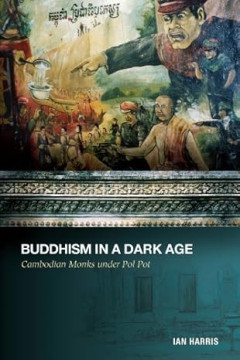
E-book Buddhism in a Dark Age: Cambodian Monks under Pol Pot
This pioneering study of the fate of Buddhism during the communist period in Cambodia puts a human face on a dark period in Cambodia’s history. It is the first sustained analysis of the widely held assumption that the Khmer Rouge under Pol Pot had a centralized plan to liquidate the entire monastic order. Based on a thorough analysis of interview transcripts and a large body of contemporary m…
- Edisi
- -
- ISBN/ISSN
- 9780824835613
- Deskripsi Fisik
- 258 halaman
- Judul Seri
- -
- No. Panggil
- 294.309 HAR b
E-book The Cambridge Illustrated History of the Islamic World
Islamic peoples account for one fifth of the world's population and yet there is widespread misunderstanding in the West of what Islam really is. Francis Robinson and his team set out to address this, revealing the complex and sometimes contrary nature of Muslim culture. As well as taking on the issues uppermost in everyone's minds, such as the role of religious and political fundamentalism, th…
- Edisi
- -
- ISBN/ISSN
- 9780521435102
- Deskripsi Fisik
- 347 halaman, ilus.
- Judul Seri
- -
- No. Panggil
- 297.6 ROB t
E-book The Cambridge Illustrated History of Medicine
- Edisi
- -
- ISBN/ISSN
- 9780521442117
- Deskripsi Fisik
- 400 halaman, ilus.
- Judul Seri
- -
- No. Panggil
- 610 POR t
- Edisi
- -
- ISBN/ISSN
- 9780521442117
- Deskripsi Fisik
- 400 halaman, ilus.
- Judul Seri
- -
- No. Panggil
- 610 POR t
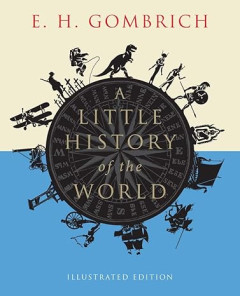
E-book A Little History of the World: Illustrated Edition
E. H. Gombrich’s A Little History of the World, an engaging and lively book written for readers both young and old, vividly brings the full span of human experience on Earth to life, from the stone age to the atomic age. Gombrich’s text paints a colorful picture of wars and conquests; of grand works of art; of the advances and limitations of science; of remarkable people and remarkable even…
- Edisi
- -
- ISBN/ISSN
- 9780300197181
- Deskripsi Fisik
- 455 halaman, ilus.
- Judul Seri
- -
- No. Panggil
- 909 GOM a
 Karya Umum
Karya Umum  Filsafat
Filsafat  Agama
Agama  Ilmu-ilmu Sosial
Ilmu-ilmu Sosial  Bahasa
Bahasa  Ilmu-ilmu Murni
Ilmu-ilmu Murni  Ilmu-ilmu Terapan
Ilmu-ilmu Terapan  Kesenian, Hiburan, dan Olahraga
Kesenian, Hiburan, dan Olahraga  Kesusastraan
Kesusastraan  Geografi dan Sejarah
Geografi dan Sejarah